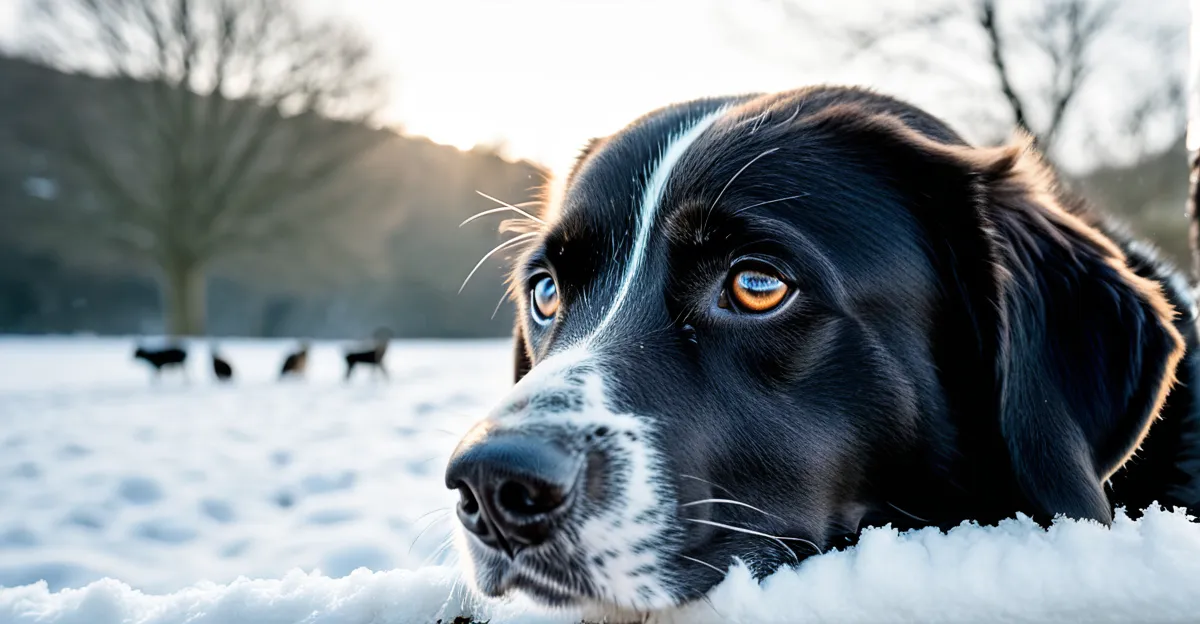Essential Winter Safety Tips for UK Pets
Winter in the UK brings unique challenges that require tailored winter pet safety approaches to protect animals from cold, damp, and icy conditions. Recognising increased dangers is crucial: pets are prone to hypothermia, frostbite, and injuries caused by slippery surfaces or exposure to harmful substances like road salt and grit.
Providing both indoor and outdoor protection means ensuring pets have a warm, dry area to rest inside and protective gear such as coats and booties when outside. Adjusting routines is equally important. Shorter, more frequent walks during daylight, avoiding icy paths, and drying paws promptly after walks reduce risks.
In parallel : How can UK pet owners reduce their carbon footprint?
Adapting to wet weather and cold means pet owners must remain vigilant about signs of discomfort or illness, which includes shivering, lethargy, or limping. Many UK dogs benefit from winter pet safety products like insulated coats or paw balms that prevent cracking.
In summary, safeguarding pets against harsh weather demands a combination of awareness, routine changes, and physical protection. Prioritising these factors helps keep pets comfy and safe throughout harsh UK winters.
In parallel : How Can UK Pet Owners Ensure Their Pets Are Happy?
Outdoor Protection and Safe Dog Walking
Ensuring outdoor pet safety during UK winters means equipping dogs with appropriate winter pet gear like insulated coats and booties. These protect against cold, ice, and rough terrain, significantly reducing the risk of frostbite or paw injuries. Booties shield delicate pads from harsh road salt and grit, substances known to cause irritation or chemical burns.
When considering dog walking in winter, selecting safe routes is vital. Choose paths that are less likely to be icy or salted heavily and offer good lighting to enhance visibility during shorter daylight hours. Walking times should be adjusted to midday or early afternoon to maximise warmth and safety.
Minimising exposure to salt and grit involves wiping paws thoroughly after walks with warm water or pet-friendly wipes. This prevents ingestion and skin irritation from harmful chemicals. If conditions are icy, reduce walk length and opt for indoor play or training sessions to maintain exercise without risk.
In summary, prioritising winter pet safety outdoors involves thoughtful route planning, suitable clothing, and proactive paw care. Implementing these strategies supports a safe and enjoyable winter walking routine for UK dogs.
Nutrition and Hydration Adjustments in Cold Weather
Winter pet nutrition demands careful attention to help pets cope with lower temperatures. During colder months, pets often require increased calories to maintain body heat and energy. Dogs and cats burning more calories may benefit from slight adjustments to their regular feeding routines, ensuring they receive enough nutrients without overfeeding.
Keeping pets well-hydrated is equally vital. Cold-weather pet hydration can be challenging because water bowls may freeze outdoors. Providing fresh, unfrozen water indoors encourages regular drinking, which supports metabolism and overall health. Pet owners should check water supply multiple times daily to prevent dehydration.
Monitoring food intake helps maintain a healthy weight, crucial since both underfeeding and overfeeding can impair winter pet safety. Weight loss may signal underlying cold-related stress; conversely, lack of activity during winter might cause weight gain if calorie intake isn’t adjusted accordingly.
In summary, balancing winter pet nutrition with accessible hydration supports pets’ resilience to cold. Proactive feeding and watering strategies form an essential part of comprehensive UK winter pet care, keeping animals nourished, hydrated, and protected through chilly months.





